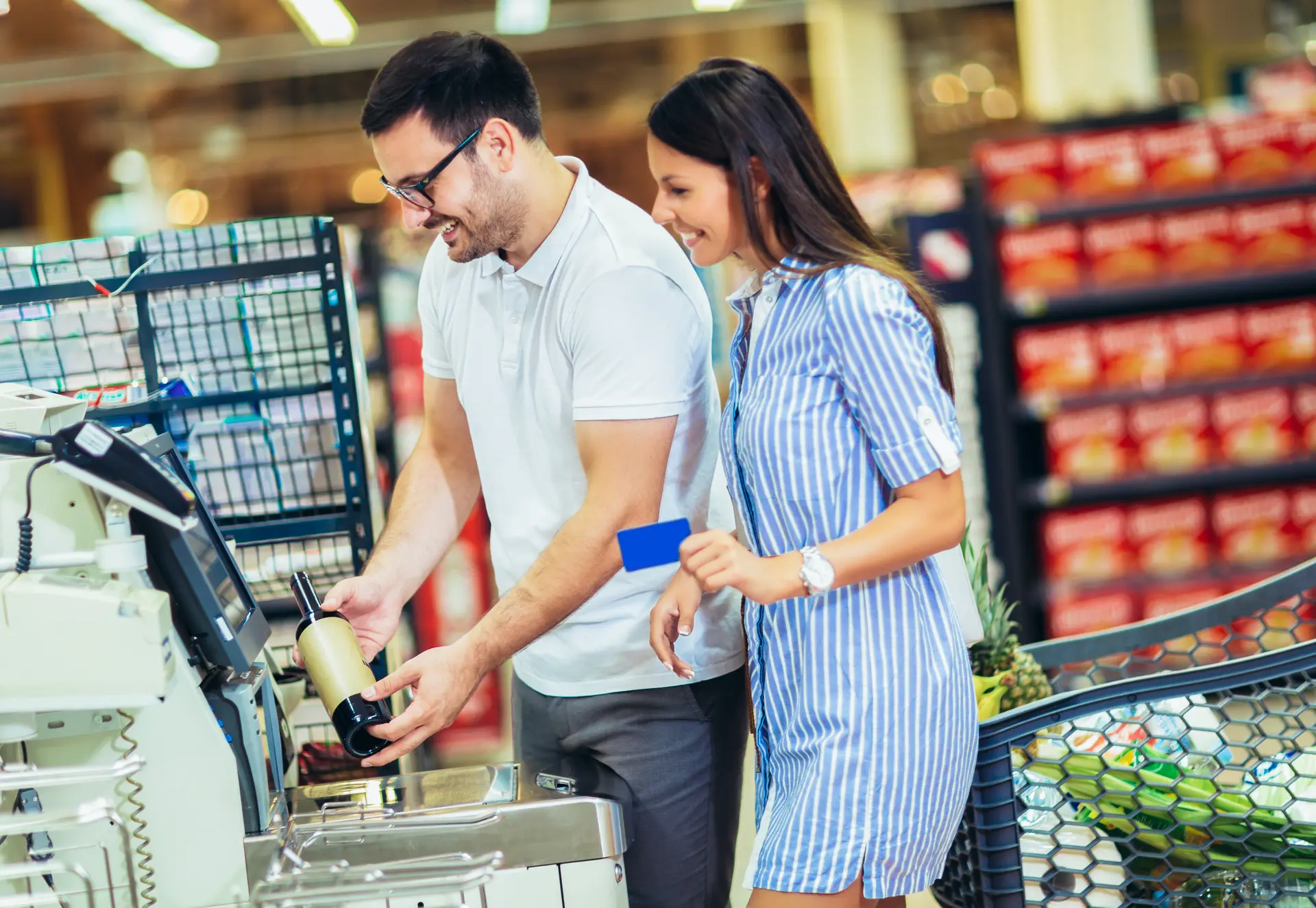
From Concept to Convenience: The Evolution of Self-Checkout
June 7, 2024
Since the outbreak of the pandemic in 2020, self-checkout systems have seen wider adoption due to their touchless feature. However, self-checkout tools have both pros and cons for consumers and businesses alike.
It is worth noting that since 2024, some retail giants in the US gradually phased out or reduced the use of self-checkout, while still facing the dilemma of labor shortages. This article delves into the rise, growth, pause, and recent changes in self-checkout systems.
The Rise and Growth of Self-Checkout
In 1986, the world’s first self-checkout machine was born at Kroger supermarket in Atlanta, USA. This revolutionary concept stemmed from an experience David R. Humble had in 1984 while waiting in line at a supermarket.
He saw a male customer ahead of him becoming impatient with the long wait in line. When it was this customer’s turn to check out, he angrily scanned the items himself, speeding up the process. This scene inspired David, leading him to ponder, “Why can’t people check out themselves and leave quickly?” He presented this concept to CheckRobot, his employer at the time, which subsequently developed the equipment and proposed a collaboration to Kroger. In 1986, Kroger officially introduced the self-checkout system. 1
Over the past thirty years, self-checkout machines have undergone continuous optimization and upgrades, evolving from simply scanning barcodes to offering additional functions such as dispensing change, weighing items, and facilitating participation in loyalty programs.
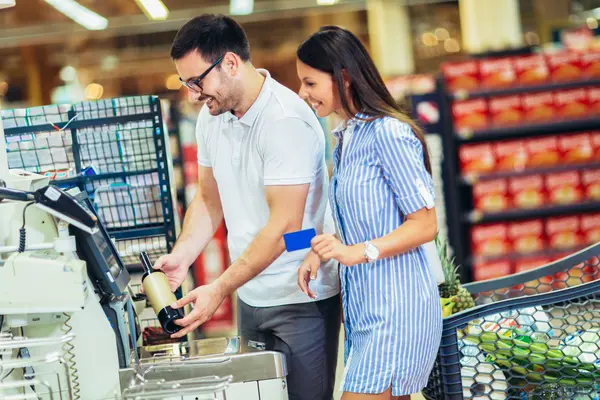
The Pros and Cons of Self-Checkout: From Consumers Perspective
However, opinions on self-checkout have always been split.
For customers familiar with the process, self-checkout is quick and simple, avoiding unnecessary social interactions with cashiers, which is a relief for those who prefer swift transactions. However, for less tech-savvy consumers, using self-checkout may take longer than traditional cashier checkout and may still result in queuing, causing wait times for those behind.
According to Capgemini research, 66% of consumers strongly believe that “automated checkout devices” can solve the problem of lengthy checkout queues, but if there is a lack of cashier assistance nearby, 51% of consumers feel uneasy. In fact, almost half of consumers (42%) do not find self-checkout convenient, as they often require assistance from cashiers. 2 This shows that even in this technology era, there is still a considerable reliance on cashier service for self-checkout.
Furthermore, some consumers feel inconvenienced and dissatisfied as the checkout service previously provided by cashiers has now become self-service. And machines lack the warmth of human service, making self-checkout particularly unsuitable for customers who value interaction with cashiers.
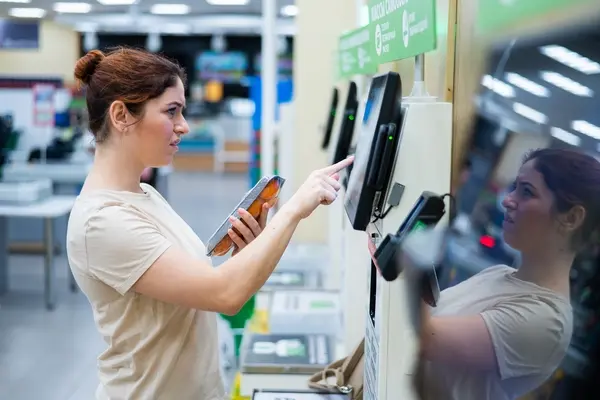
The Pros and Cons of Self-Checkout: From the Business Perspective
For businesses, self-checkout is a double-edged sword.
When properly designed and easy to use, self-checkout can significantly enhance checkout efficiency and save on labor costs. If the system has multilingual functionality, it can even solve the challenge of needing to hire multilingual cashiers for some merchants.
In recent years, the labor shortage caused by an aging population has become more severe post-COVID, making self-checkout systems a temporary or even permanent solution to address labor shortages.
However, when multiple customers encounter issues with self-checkout at the same time, the cashier often becomes overwhelmed. If not handled properly, it can easily lead to customer dissatisfaction and complaints.
Restrictions on Self-Checkout Usage
As various issues with self-checkout have raised concerns, efforts are underway to protect consumer rights and safeguard store employees’ jobs. Legislators in California are drafting a new bill for 2024 that would mandate retail stores to close self-checkout lanes unless they meet all of the following conditions3:
- Provide at least one manned checkout counter
- Limit the checkout items for self-checkout to 10 or fewer.
- Prohibit customers from using self-checkout to purchase specific items.
- One employee can oversee a maximum of two self-checkout machines, and the employer cannot require the employee to perform other tasks simultaneously.
These regulations illustrate the region’s concerns about self-checkout. Not only the government, but many large retailers have already started adjusting their self-checkout approaches. For instance, Target has implemented a policy allowing only customers purchasing 10 or fewer items to use self-checkout. Dollar General has discontinued self-checkout services in 300 stores due to high theft rates. Additionally, Kroger, which heavily relies on self-checkout, has added manned checkout counters in a store located in Dallas. 4
Is “Grab-and-Go” a Better Alternative for Self-Checkout?
Although Amazon launched the Amazon Go stores with the Just Walk Out technology in 2018, allowing consumers to grab items and leave, it closed nine Amazon Go stores in 2023 and switched to using smart shopping carts instead of the Just Walk Out technology in Amazon Fresh grocery stores. This indicates that the grab-and-go solution still needs optimization and improvement, including high setup and maintenance costs and various usage restrictions.
Related Article: How retailers can cut down on checkout queues without turning their store into a grab-and-go
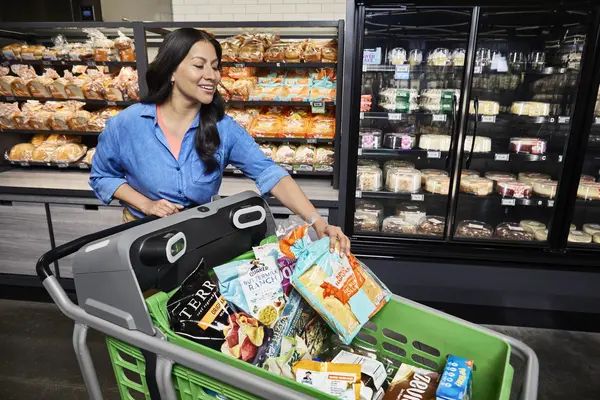
AI Empowering the Future Development of Self-Checkout
Instead of a leap to grab-and-go, there are now more technologies to replace traditional self-checkout, one of which is the AI-powered image recognition technology. While similar to Amazon’s Just Walk Out, this type of technology is more lightweight, requiring no installation of cameras throughout the entire store or weight sensors on every shelf. Not only does it lower the barriers to AI adoption, but it also comes with significantly lower setup costs.
Compared to scanning item barcodes one by one, a checkout system powered by “AI image recognition” can recognize multiple checkout items within a second through a camera.
Furthermore, AI can swiftly identifies non-barcode items like bread, cakes, and fresh produce, with simple operation, effectively shortening checkout times.
For consumers, the operation is intuitive and simple, with low learning costs. For businesses, concerns about inaccurate scanning are alleviated, as AI reliably identifies products.
Currently, Viscovery’s AI-powered Visual Checkout system has been deployed at Hi Noodle, a Chinese noodle shop under the Haidilao Group in Singapore, as well as in an employees’ micromarket within a department store in Sendai, Japan, among other locations.
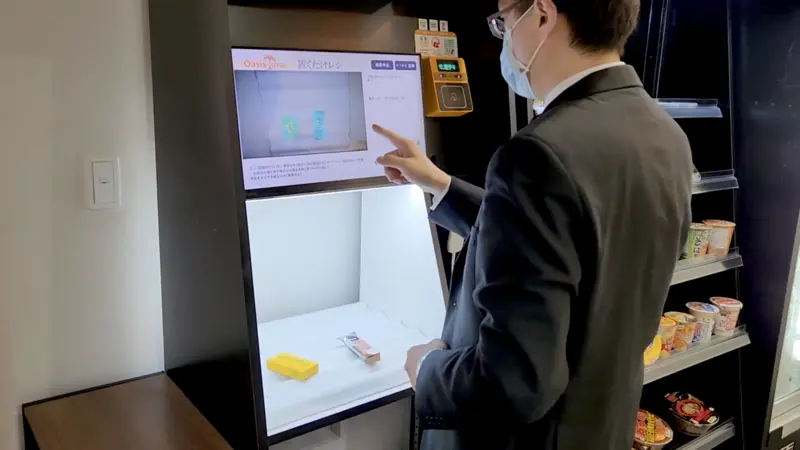
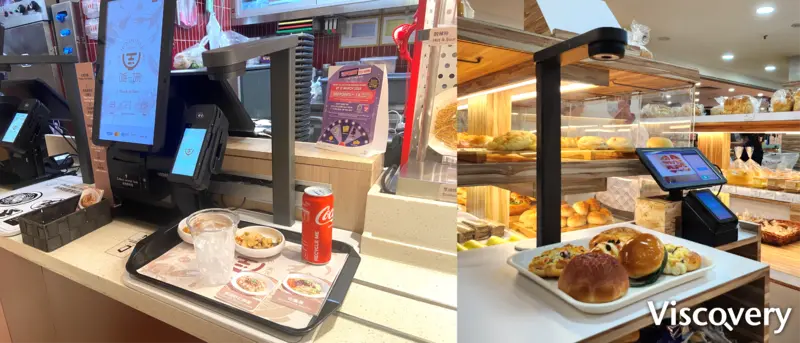
Balance Innovation and Customer Service
With the help of AI, the future evolution of checkout tools holds great potential. However, businesses and technology providers must consistently prioritize consumers’ needs and experiences, ensuring these tools are user-friendly and easy to operate. It is crucial to avoid overlooking any aspect when introducing new technologies.
Balancing technological innovation with customer service remains a critical issue that industry players must continue to address.
(Featured image: Photo by Shutterstock)
[Reference]
1 Moore, Riley. “Employee Suggestion Origin Story: Self-Checkout Machines.” Direct Suggestions Biweekly newsletter, 21 November 2023, https://www.linkedin.com/pulse/employee-suggestion-origin-story-self-checkout-machines-riley-moore-c5oec/.
2 Capgemini Research Institute. “Smart Stores: Rebooting the Retail Store through in-store Automation.” Capgemini, January 2020, https://www.capgemini.com/wp-content/uploads/2020/01/Report-%E2%80%93-Smart-Stores.pdf.
3 Saab, Ginger Conejero and Ian Cull. “New California bill could force stores to close self-checkout.” NBC Bay Area, 6 May 2024, https://www.nbcbayarea.com/news/california/california-bill-stores-self-checkout/3530545/.
4 Hamstra, Mark. “Walmart removes self-checkout from two more stores.” Supermarket News, 23 April 2024, https://www.supermarketnews.com/retail-financial/walmart-removes-self-checkout-two-more-stores.

